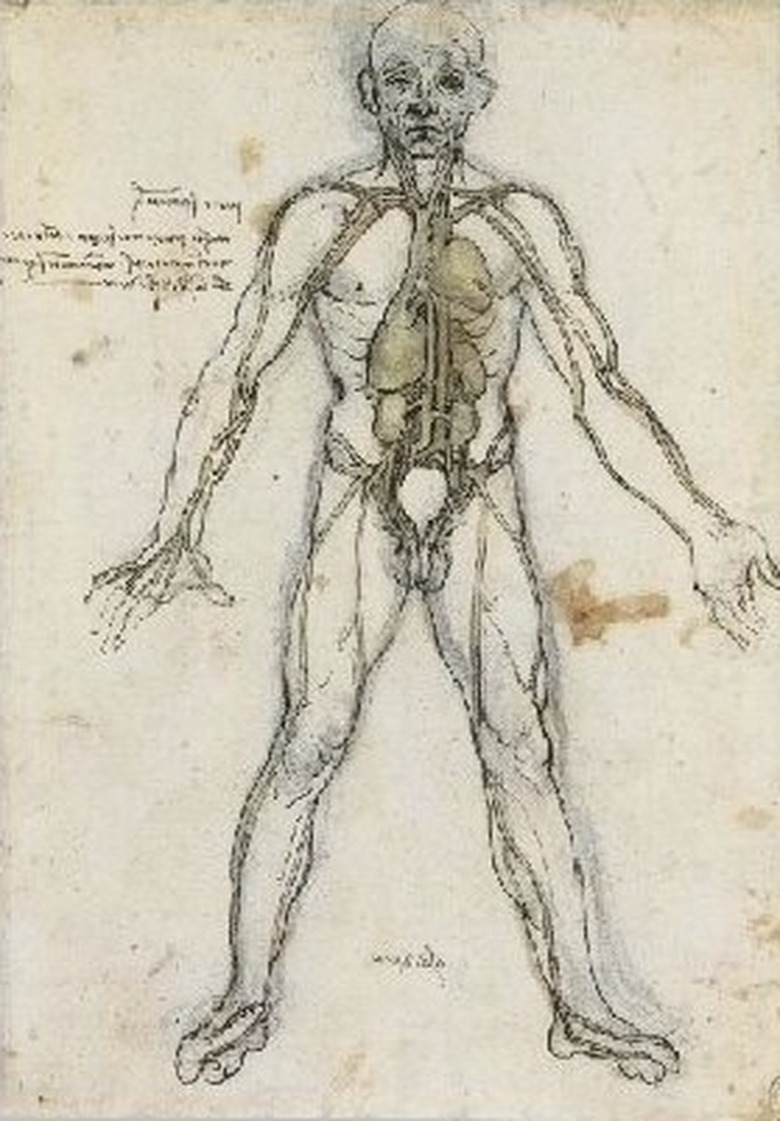Angiogenesis Vs. Vasculogenesis
Angiogenesis and vasculogenesis refer to the growth of blood vessels. Angiogenesis is the growth most often associated with damaged or smaller blood vessels, while vasculogenesis generally occurs when the primary blood system is being created or changed. By studying the chemical reactions that occur in both processes, scientists can better understand the blood vessel systems of both humans and animals, and create drugs that help repair damage associated with blood vessels.
Blood Vessel Growth
Blood Vessel Growth
Certain genes inside cells control the formation of blood vessels in humans, telling cells when to bind chemicals to proteins or when to create different, specialized cells. Sometimes these specialized cells are directed to form blood vessel walls which eventually create entire blood vessels, supplied with blood cells created by the bone marrow cells within our bodies. The processes of blood cell creation are known as vasculogenesis and angiogenesis, but the two processes are distinguished by what chemical actions are used and when they occur in the body's development.
Occurrence
Occurrence
Vasculogenesis occurs during the very early developmental stages of an organism when the blood vessel pathways are created. Angiogenesis, while a similar process, does not depend on the same genes for activation as vasculogenesis and occurs instead in the presence of an injury to a blood vessel, such as a cut or the slight damage done to the ovary post-ovulation. Angiogenesis is a remodeling process only, while vasculogenesis creates the blood vessels themselves.
Vasculogenesis
Vasculogenesis
Vasculogenesis takes place when mesodermal cells connected to the bone marrow split into endothelial cells, which in turn form blood capillaries. This takes place very early in a human's development, usually only several days after conception.
Angiogenesis
Angiogenesis
Angiogenesis is a type of blood vessel creation that can happen any time during an organism's life, and does not occur only at the organism's formation. It is most often associated with repairing damage to the blood vessels or creating smaller blood vessels in the network. This process uses two different chemical signals, the first of which loosens the support cells in the blood vessel network near an injury while the second activates the same endothelial cells as vasculogenesis to help the widespread cells develop new growth. The process can be seen as a sort of expansion rather than construction.
Uses
Uses
Scientists are working on developing supplements and medical treatments that stimulate both vasculogenesis and angiogenesis to help repair serious bodily injuries. In the case of angiogenesis, supplements are designed to help keep blood vessels strong and aid in quick wound recovery, while in vasculogenesis endothelial cells themselves are transplanted to help treat innate blood vessel conditions.
References
- Arteriosclerosis, Thrombosis, and Vascular Biology
- The Biology of the Skin; Ruth K. Freinkel, David Woodley; 2001
- Angiogenesis: An Introduction
Cite This Article
MLA
Lacoma, Tyler. "Angiogenesis Vs. Vasculogenesis" sciencing.com, https://www.sciencing.com/angiogenesis-vs-vasculogenesis-5649273/. 24 April 2017.
APA
Lacoma, Tyler. (2017, April 24). Angiogenesis Vs. Vasculogenesis. sciencing.com. Retrieved from https://www.sciencing.com/angiogenesis-vs-vasculogenesis-5649273/
Chicago
Lacoma, Tyler. Angiogenesis Vs. Vasculogenesis last modified August 30, 2022. https://www.sciencing.com/angiogenesis-vs-vasculogenesis-5649273/
